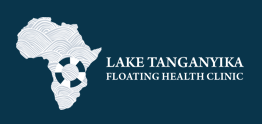Data Collection
Data are a powerful tool crucial to the upstream challenge of understanding the drivers behind a complex web of problems found in fragile communities. Nuanced understanding lays the foundation for real change to occur, because it describes the actual reality on the ground, instead of a projected or simplified version that so often guides large aid programs.
In 2016, LTFHC was successful in collecting rigorous cross-sectoral data on 94 indicators in 41 villages in South Kivu Province with a combined population of over 400,000. As a result of this herculean effort, we now have baseline data covering environmental, socio-economic, health (with particular focus on malaria), fisheries, political- and food security, and demographic indicators, all of which are geo-located using GPS coordinates. These data help us understand the relationships between public health outcomes, hunger, disease, environmental and security related factors, and what inexpensive and targeted approaches might achieve to alleviate suffering in the communities we serve, as well as the risks to existing programming deployed by large agencies that often don’t have our level of visibility on the situation.
Building upon this data set, we subsequently created a data analytics and visualization platform which is helping us tell an authentic story of people’s experiences in the lake basin. These powerful, clear visuals help foster a broader understanding of local realities— the barriers and the possible solutions and with them, we are beginning to show granular community-level data, gaps in data flow that mean the severity of certain problems remain hidden or not well-understood, and maps of longitudinal data sets showing changes over time and through various shocks (e.g. eruptions of insecurity or extreme weather events). Our rigorous and dynamic methods, coupled with clear maps, graphs, and narratives from the local population, are helping us to both continue to serve people effectively and be accountable to those same people by measuring the efficacy of current interventions (our own and those of other organizations).
Due to severe infrastructural challenges, the flow of public health information from community level Health Centers (HC) up the Ministry of Health (MOH) chain is profoundly impaired; the national MOH often can access data only from the Health Zone (HZ) level, which is comprised of the aggregation of data from multiple HCs that is often incomplete and error-prone. LTFHC took the first steps in addressing this communications gap: first by installing High Frequency (HF) radios for verbal communication between rural health centers and the central MOH, and second by establishing the template for electronic data collection at the HC level via an application called “Iroko” run on a tablet requiring no internet or 3G access and charged using solar power. Epidemiologic reporting increased significantly as a result of health care workers’ ability to report data to the HZ via radio, rather than having to physically transport written data at intermittent intervals. Further, the scaling of Iroko based on the MOH’s existing paper records will be a step-change improvement in healthcare data collection, both by increasing the accuracy of reporting at the HC level as well as transfer and uptake of these data by the HZ using an easy to use online database. The current pandemic has forced others to acknowledge what LTFHC has been advocating for many years: accessing community level public health data is a cornerstone for health systems building and for global disease surveillance.
Examples of LTFHC’s data-driven approach:
LTFHC Data: Prioritizing Health Areas
LTFHC Data: Cross-Sectoral Complexity



